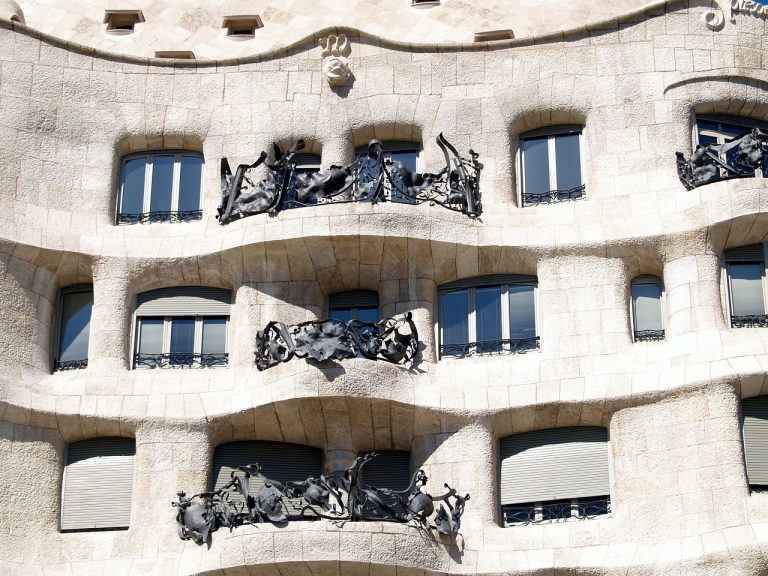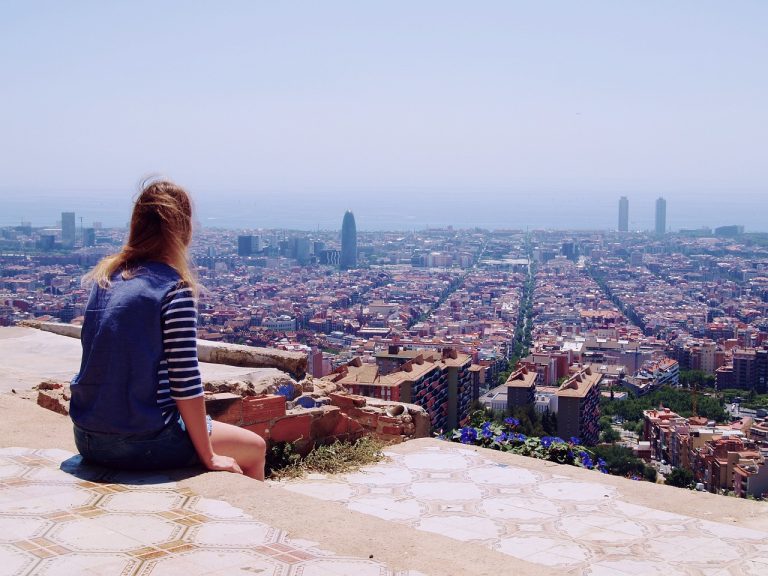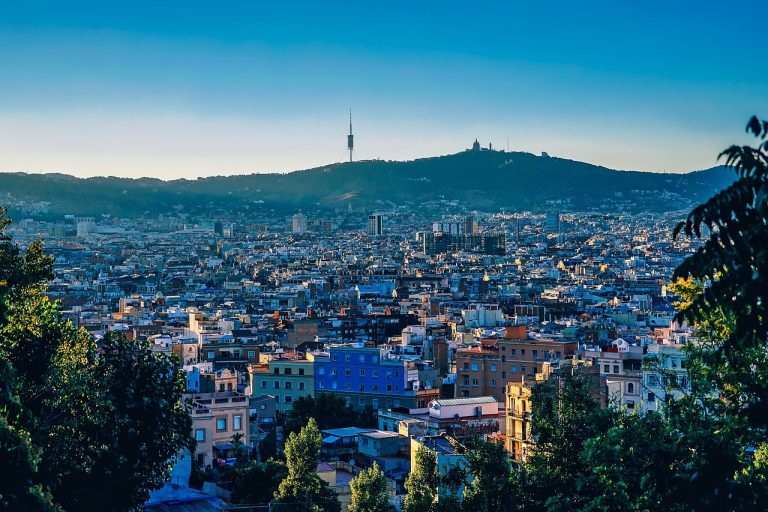Barcelona Spain Video
Historical Treasures of Barcelona Spain: Reliving the Past
Barcelona, the capital of Catalonia in Spain, is a city rich in history and cultural heritage. From ancient Roman ruins to stunning Gothic architecture, Barcelona is a treasure trove of historical wonders. In this article, we will explore the historical treasures that allow visitors to relive the past and delve into the fascinating history of this vibrant city.
The Gothic Quarter: A Timeless Beauty
The Gothic Quarter, also known as Barri Gòtic, is a maze of narrow streets and charming squares that dates back to the Roman era. Walking through this historic neighborhood is like stepping back in time. Some of the must-see attractions in the Gothic Quarter include:
- Barcelona Cathedral: Built between the 13th and 15th centuries, the Barcelona Cathedral is a masterpiece of Gothic architecture. Its magnificent facade and intricate interior make it a true gem of the city.
- Plaça del Rei: This beautiful square is home to the Royal Palace of Barcelona, a medieval palace that served as the residence of the counts of Barcelona. It also houses the Barcelona City History Museum, where visitors can learn more about the city’s past.
- Sant Felip Neri Square: Tucked away in a quiet corner of the Gothic Quarter, Sant Felip Neri Square is a hidden gem. It features a charming church and a square with a tragic history, as it was bombed during the Spanish Civil War.
Barcelona Spain Image 1:

The Magic Fountain of Montjuïc: A Spectacle of Light and Water
Located at the foot of Montjuïc Hill, the Magic Fountain is a mesmerizing attraction that delights visitors with its enchanting water and light shows. Built for the 1929 Barcelona International Exposition, the fountain has become an iconic symbol of the city. Here are some highlights of the Magic Fountain:
- Light and Music Shows: The Magic Fountain puts on spectacular light and music shows, combining colorful lights and synchronized water jets. These shows take place on certain evenings and attract crowds of locals and tourists alike.
- Puerta de España: The grand entrance to the Magic Fountain, Puerta de España, features impressive statues and intricate details. It serves as a fitting prelude to the magical experience that awaits visitors.
- Montjuïc Hill: After enjoying the fountain show, visitors can explore Montjuïc Hill, which offers breathtaking views of Barcelona and is home to several other attractions, including the Montjuïc Castle and the Olympic Stadium.
Barcelona Spain Image 2:

Park Güell: Gaudí’s Artistic Masterpiece
Designed by the renowned architect Antoni Gaudí, Park Güell is a UNESCO World Heritage Site and a testament to Gaudí’s unique artistic vision. This whimsical park is a must-visit for art and architecture enthusiasts. Here are some highlights of Park Güell:
- Mosaic Tilework: One of the most distinctive features of Park Güell is the vibrant mosaic tilework that adorns many of its structures. Gaudí’s use of colorful tiles creates a magical and surreal atmosphere.
- The Dragon Stairway: At the entrance of the park, visitors are greeted by a magnificent dragon sculpture covered in colorful tiles. The dragon has become one of the iconic symbols of Barcelona.
- The Hypostyle Room: This unique space features a forest of stone columns with intricate designs, creating a sense of harmony and tranquility. It offers a peaceful retreat from the bustling city.
Barcelona Spain Image 3:

The Picasso Museum: Exploring the Master’s Early Works
Located in the El Born neighborhood, the Picasso Museum houses one of the most extensive collections of artworks by the legendary painter, Pablo Picasso. The museum focuses on Picasso’s formative years and provides valuable insights into his artistic development. Here are some highlights of the Picasso Museum:
- Early Works: The museum showcases Picasso’s early works, including his Blue Period and Rose Period paintings. Visitors can witness the evolution of his style and gain a deeper understanding of his artistic journey.
- Sketches and Drawings: In addition to paintings, the museum also displays a vast collection of Picasso’s sketches and drawings. These provide a glimpse into his creative process and reveal the depth of his artistic talent.
- The Palau Aguilar: The museum is housed in several medieval palaces, including the Palau Aguilar. The architecture of the buildings adds to the overall charm of the museum and creates a unique setting for the artworks.
La Sagrada Família: Gaudí’s Unfinished Masterpiece
La Sagrada Família is perhaps the most famous landmark in Barcelona and a symbol of the city. Designed by Antoni Gaudí, this monumental basilica is still under construction, with an estimated completion date in the next decade. Here are some highlights of La Sagrada Família:
- Gaudí’s Vision: La Sagrada Família showcases Gaudí’s distinctive architectural style and his innovative approach to design. The basilica is a fusion of Gothic and Art Nouveau elements, with intricate details and towering spires.
- The Nativity Façade: One of the most striking features of La Sagrada Família is the Nativity Façade, which depicts scenes from the birth of Jesus. The intricate sculptures and ornate details make this façade a true work of art.
- The Passion Façade: Another impressive part of the basilica is the Passion Façade, which portrays the suffering and crucifixion of Jesus. The stark and angular design of this façade creates a powerful and dramatic effect.
The National Museum of Art of Catalonia: A Journey through Catalan Art
The National Museum of Art of Catalonia, also known as MNAC, is housed in the majestic Palau Nacional and showcases a vast collection of Catalan art from the Romanesque period to the 20th century. Here are some highlights of the MNAC:
- Romanesque Art: The museum boasts an exceptional collection of Romanesque art, including paintings, sculptures, and murals. These artworks provide insights into the religious and cultural life of Catalonia during the Middle Ages.
- Modernista Collection: The MNAC also features a significant collection of Modernista art, which includes works by renowned artists such as Gaudí, Ramon Casas, and Santiago Rusiñol. This collection showcases the artistic movement that defined Catalonia in the late 19th and early 20th centuries.
- The Palau Nacional: The museum is housed in the Palau Nacional, a magnificent building that offers panoramic views of Barcelona. Its grand architecture and stunning location make it an attraction in itself.
The Roman Ruins at Barcino: Traces of Ancient History
Barcelona, known as Barcino during the Roman era, still preserves remnants of its ancient past. The Roman ruins in Barcelona offer a fascinating glimpse into the city’s history. Here are some highlights of the Roman ruins at Barcino:
- The Roman Walls: The Roman walls that once surrounded the city can still be seen in certain areas of Barcelona. These walls are a testament to the city’s strategic importance during Roman times.
- The Temple of Augustus: Located in the Gothic Quarter, the Temple of Augustus is a well-preserved Roman temple dedicated to the emperor Augustus. It is one of the few remaining Roman temples in the city.
- The Roman Necropolis: Beneath the streets of Barcelona lie ancient burial grounds known as the Roman Necropolis. Excavations have revealed tombs and artifacts that shed light on the burial customs of the Roman inhabitants of Barcino.
The Maritime Museum: Exploring Barcelona’s Naval History
Located in the historic Drassanes Reials, the Maritime Museum of Barcelona offers a fascinating journey through the city’s maritime heritage. From ancient ships to modern naval artifacts, the museum provides a comprehensive overview of Barcelona’s naval history. Here are some highlights of the Maritime Museum:
- The Galley of Juan de Austria: The centerpiece of the museum is the Galley of Juan de Austria, a full-scale replica of a 16th-century warship. Visitors can step aboard and imagine what life was like for sailors during that time.
- The Royal Shipyards: The museum is housed in the historic Royal Shipyards, where ships were built and repaired for centuries. The impressive architecture of the building adds to the overall experience.
- The Navigation Instruments Collection: The Maritime Museum also features a collection of navigation instruments, charts, and maps, showcasing the tools used by sailors to navigate the seas.
The Montjuïc Cemetery: A Silent Sanctuary
Perched on Montjuïc Hill, the Montjuïc Cemetery is not only a final resting place but also a place of historical significance. This tranquil cemetery is the burial site of many notable figures and offers panoramic views of the city. Here are some highlights of the Montjuïc Cemetery:
- Pantheon of Illustrious Catalans: The cemetery is home to the Pantheon of Illustrious Catalans, a mausoleum that houses the tombs of prominent figures in Catalan history, including artists, politicians, and intellectuals.
- Architectural Features: The cemetery features beautiful sculptures, elaborate tombstones, and intricate mausoleums that reflect different architectural styles. It is a peaceful place for reflection and contemplation.
- Panoramic Views: As the cemetery is situated on a hill, it offers stunning panoramic views of Barcelona and the surrounding landscape. It is a serene spot to admire the beauty of the city while paying respects to the departed.
Conclusion
Barcelona’s historical treasures offer a captivating journey through time, allowing visitors to immerse themselves in the rich history and culture of the city. From ancient Roman ruins to modernist marvels, Barcelona’s architectural wonders and museums provide a fascinating glimpse into the past. By exploring these historical treasures, visitors can truly relive the vibrant history of Barcelona, Spain.
References
– Barcelona Cathedral: barcelona.cat
– Plaça del Rei: museuhistoria.bcn.cat
– Sant Felip Neri Square: timeout.com
– Magic Fountain of Montjuïc: barcelonaturisme.com
– Park Güell: parkguell.barcelona
– Picasso Museum: museupicasso.bcn.cat
– La Sagrada Família: sagradafamilia.org
– National Museum of Art of Catalonia: mnac.cat
– Roman Ruins at Barcino: barcelonaturisme.com
– Maritime Museum of Barcelona: museunaval.barcelona
– Montjuïc Cemetery: cementerimontjuic.com







